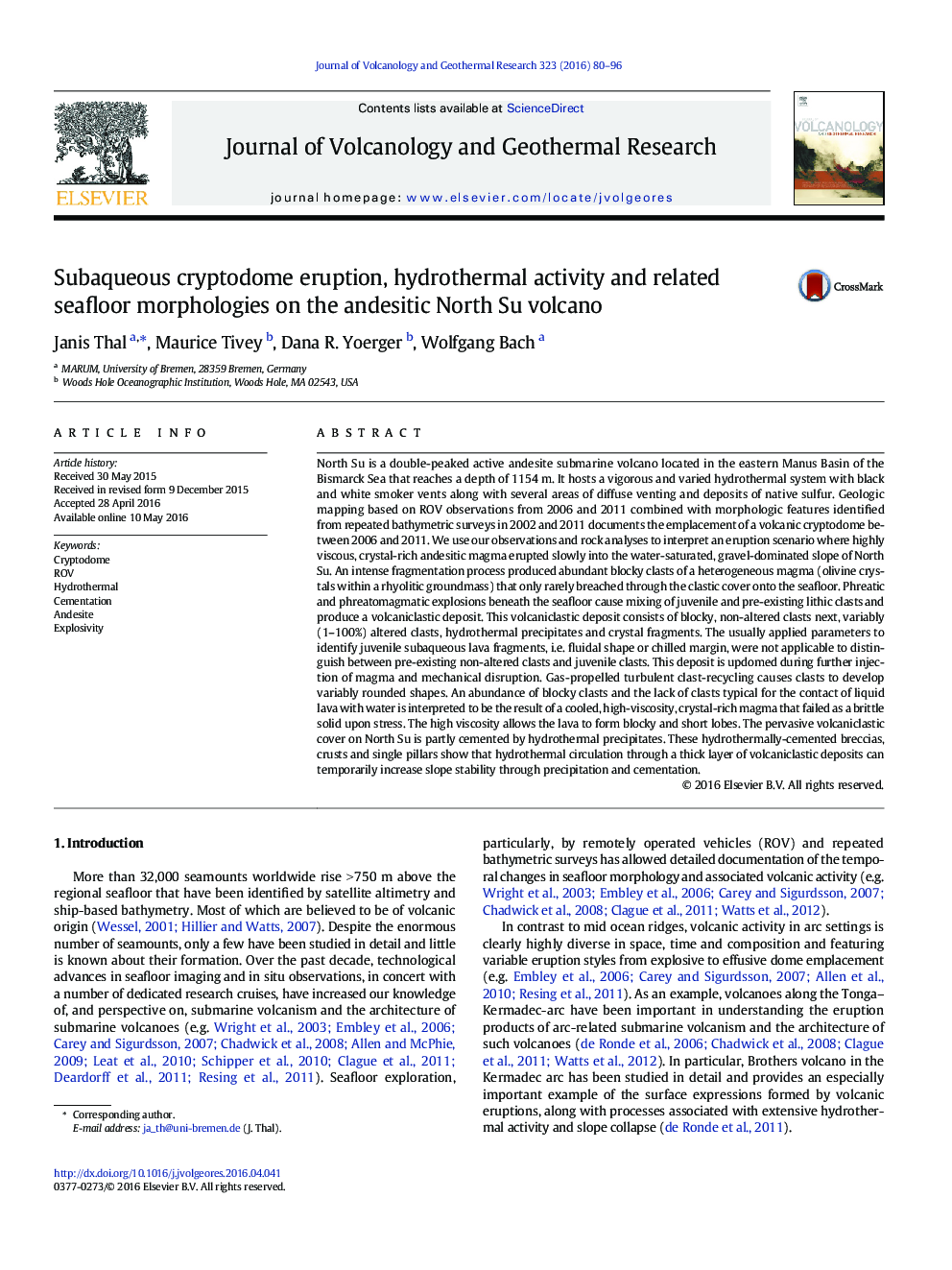| کد مقاله | کد نشریه | سال انتشار | مقاله انگلیسی | نسخه تمام متن |
|---|---|---|---|---|
| 4712652 | 1638299 | 2016 | 17 صفحه PDF | دانلود رایگان |

• Subaqueous andesitic volcanism at the SER, Manus Basin, Papua New Guinea
• Subaqueous cryptodome eruption through a hydrothermal system
• Deep subaqueous explosivity caused by a cryptodome emplacement
• Sulfur Candles white smoker vent site with liquid CO2 discharge
• White and black smoker hydrothermal vent sites within 100 m lateral distance
North Su is a double-peaked active andesite submarine volcano located in the eastern Manus Basin of the Bismarck Sea that reaches a depth of 1154 m. It hosts a vigorous and varied hydrothermal system with black and white smoker vents along with several areas of diffuse venting and deposits of native sulfur. Geologic mapping based on ROV observations from 2006 and 2011 combined with morphologic features identified from repeated bathymetric surveys in 2002 and 2011 documents the emplacement of a volcanic cryptodome between 2006 and 2011. We use our observations and rock analyses to interpret an eruption scenario where highly viscous, crystal-rich andesitic magma erupted slowly into the water-saturated, gravel-dominated slope of North Su. An intense fragmentation process produced abundant blocky clasts of a heterogeneous magma (olivine crystals within a rhyolitic groundmass) that only rarely breached through the clastic cover onto the seafloor. Phreatic and phreatomagmatic explosions beneath the seafloor cause mixing of juvenile and pre-existing lithic clasts and produce a volcaniclastic deposit. This volcaniclastic deposit consists of blocky, non-altered clasts next, variably (1–100%) altered clasts, hydrothermal precipitates and crystal fragments. The usually applied parameters to identify juvenile subaqueous lava fragments, i.e. fluidal shape or chilled margin, were not applicable to distinguish between pre-existing non-altered clasts and juvenile clasts. This deposit is updomed during further injection of magma and mechanical disruption. Gas-propelled turbulent clast-recycling causes clasts to develop variably rounded shapes. An abundance of blocky clasts and the lack of clasts typical for the contact of liquid lava with water is interpreted to be the result of a cooled, high-viscosity, crystal-rich magma that failed as a brittle solid upon stress. The high viscosity allows the lava to form blocky and short lobes. The pervasive volcaniclastic cover on North Su is partly cemented by hydrothermal precipitates. These hydrothermally-cemented breccias, crusts and single pillars show that hydrothermal circulation through a thick layer of volcaniclastic deposits can temporarily increase slope stability through precipitation and cementation.
Journal: Journal of Volcanology and Geothermal Research - Volume 323, 1 September 2016, Pages 80–96